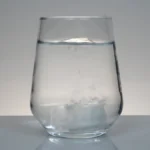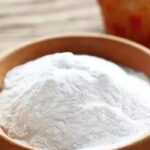Fumaric acid in bread is important for bakers who want better quality and longer freshness. This compound helps the bread hold gas during baking, resulting in a lighter loaf with an even crumb. Fumaric acid in bread also slows down pH changes, which helps prevent the growth of harmful microbes. It keeps the bread moist and soft by reducing oxidation and controlling acidity. Many bakers prefer using fumaric acid in bread because it maintains the bread’s texture and extends its shelf life without compromising safety.

Key Takeaways
- Fumaric acid helps bread rise higher and stay soft. It does this by controlling how sour the dough is and making the dough feel better.
- It also works as a preservative. This means it keeps bread fresh for a longer time. It stops mold and bacteria from growing.
- Fumaric acid gives bread a light sour taste. This taste balances out the sweetness. It does not cover up other flavors.
- Bakers like fumaric acid because it works in small amounts. It helps save money and is simple to use.
- Fumaric acid is safe and comes from natural sources. Food safety groups say it is okay to use. This makes it a good choice for clean-label bread.
Fumaric Acid in Bread

What Is Fumaric Acid
Fumaric acid is a white, crystal-like substance. It is important in food science. Its chemical name is trans-butenedioic acid. The formula is HO₂CCH=CHCO₂H. Fumaric acid is found in some plants. These include fumitory, mushrooms, lichens, and Iceland moss. In living things, it helps make energy in the citric acid cycle. Food makers add fumaric acid to foods. They call it E297. It works well as an acidulant and leavening acid. These uses are helpful in bread and other baked foods. Fumaric acid is often used in baking powders and wheat tortillas. It helps control pH and supports leavening. This makes baked goods better.
Fumaric acid in bread lets bakers manage acidity and texture. It is a trusted part of many new recipes.
Why Use Fumaric Acid in Bread
Bakers use fumaric acid in bread for many reasons. It is very acidic for its weight. This helps bread rise and makes it lighter. Fumaric acid reacts with sodium bicarbonate. This makes carbon dioxide. The gas helps bread get bigger and softer. Fumaric acid does not soak up much water. This stops powder mixes from clumping. It also helps bread last longer. Fumaric acid dissolves slowly. This means acid-base reactions happen more slowly. Slow reactions help dough quality. Fumaric acid does not mess up leavening like citric acid can. This makes it good for bread and tortillas. The slow reaction helps dough reach the right pH. This makes the bread better. Bakers see that fumaric acid helps dough handling, texture, and shelf life.
- Fumaric acid in bread makes dough easier to work with.
- It helps keep baked goods fresh.
- Bakers use it for steady, good results.
Key Functions of Fumaric Acid
How Fumaric Acid Regulates pH Levels in Bread Dough
Fumaric acid helps control acidity in bread dough. It lowers the pH and keeps it steady while mixing and baking. This steady acidity helps enzymes and yeast work well. It makes the dough easier to handle. Bakers use fumaric acid for reliable results. Fumaric acid dissolves slowly. It releases acidity bit by bit. This stops sudden changes in the dough. Slow release helps the dough develop better. It keeps the right conditions for yeast and other ingredients.
Note: Fumaric acid’s pH control helps dough quality and bread safety.
How Fumaric Acid Enhances and Balances the Flavor Profile of Bread
Fumaric acid boosts the flavor in bread. It adds a gentle sour taste. This balances the sweetness from wheat and other things. The sourness is mild, so it does not hide other flavors. Fumaric acid also brings out small flavor notes. This makes each bite taste better. Bakers use fumaric acid for steady flavor, especially in store-bought bread. Its flavor boost helps bread taste fresh and good for longer.
How Fumaric Acid Extends Preservation and Improves the Shelf Life of Bread
Fumaric acid helps keep bread fresh longer. It stops bacteria and mold from growing. As a preservative, it lowers the pH. This makes it hard for bad microbes to live. Studies show fumaric acid can make bread last up to two weeks or more. For example, bread with fumaric acid did not get moldy for 15 days. Regular bread spoiled much faster. When used with other mold stoppers, shelf life can reach 28 days. Longer shelf life means less waste and fresher bread for customers.
| Function | Mechanism in Bread Dough |
|---|---|
| Preservative | Stops bacteria and mold, keeps bread fresh longer. |
| Acidulant | Lowers pH, gives strong acidity, improves flavor and dough. |
| Leavening Agent | Makes CO₂ with leavening agents; slow dissolve helps control reaction. |
| Dough Texture | Breaks gluten bonds, makes dough softer and easier to mix. |
How Fumaric Acid Conditions Dough and Improves Bread Texture
Fumaric acid helps condition dough. It breaks down proteins in the dough. This softens gluten and makes mixing easier. It also shortens mixing and proofing time. Baking becomes quicker. Softer dough leads to a more even crumb in bread. Fumaric acid works better than other conditioners. It changes gluten without making dough too tough. Bread comes out tender and feels nice to eat.
- Fumaric acid makes dough softer and easier to mix.
- It cuts down mixing and proofing time.
- Bread crumb gets softer and more even.
How Fumaric Acid Supports Leavening and Improves Bread Volume
Fumaric acid helps bread rise. It reacts with baking soda to make carbon dioxide gas. This gas helps dough get bigger. Fumaric acid dissolves slowly. Most gas forms during baking, not mixing. This gives bakers better control over bread size and crumb. Used right, fumaric acid makes bread lighter and airier. It also helps yeast work well. This makes bread rise better and hold its shape. Fumaric acid is important for making high-quality bread.
Tip: Coated fumaric acid works even better. It releases acid only when baking. This makes bread bigger and improves texture.
Fumaric Acid vs. Other Acids
Citric Acid
Citric acid is found in many fruits, like oranges and lemons. Bakers use it to give bread a sharp, sour flavor. It is a common acidulant and helps keep bread fresh. Citric acid makes bread taste more sour than fumaric acid does. The table below shows how fumaric acid and citric acid change bread flavor:
| Acid Type | Flavor Characteristics | Usage in Bread Products | Recommended Dosage (g/kg) |
|---|---|---|---|
| Fumaric Acid | Strong sour and salty taste | Used as acidulant and preservative | 0.1 – 0.2 |
| Citric Acid | More obvious sour taste and acidity | Common acidulant and preservative | N/A |
Citric acid is good for making bread smell and taste more sour. Fumaric acid gives a strong sour and salty taste, but it is easier to control. Bakers pick which acid to use based on the flavor they want and how much control they need.
Malic Acid
Malic acid comes from apples and some other fruits. It gives bread a smooth and long-lasting sour taste. Both malic acid and fumaric acid lower pH and help stop germs. They help bread stay fresh for 5 to 10 days longer. These acids also make dough softer and less stretchy. The table below compares malic acid and fumaric acid in bread:
| Attribute | Fumaric Acid | Malic Acid |
|---|---|---|
| Sensory Impact | Minimal taste impact; acts mainly as a functional acid | Mellow, smooth, persistent sourness; enhances fruit flavors |
| Functional Roles in Bakery | Extends freshness; improves dough machinability; delayed leavening acid; flavoring in savory baked goods | Boosts fruit flavor in baked goods like jelly-filled doughnuts and fruit pies |
| pH Effect | Lowers pH with little taste impact | Adds noticeable sourness that enhances sensory attributes |
| Usage Notes | Stronger acid, requires less quantity; improves stability and texture | Balances or intensifies fruit flavors; can reduce amount of flavor needed |
Bakers use malic acid for breads or pastries with fruit flavors. Fumaric acid is better when bakers want bread to taste plain and last longer.
Cost and Performance
Fumaric acid is very strong, so bakers use less of it. This saves money. Citric acid and malic acid need more to work the same way. Fumaric acid dissolves slowly, which helps bread rise better. It also keeps well and does not clump in dry mixes. Bakers like fumaric acid because it works well, costs less, and is easy to use.
Tip: Bakers should pick the acid that fits the flavor, texture, and price they want. Fumaric acid is strong and works with less product, so many bakeries use it today.
Fumaric acid helps bread in many ways.
- It works as a strong acidulant and preservative. This keeps bread fresh and safe.
- Bakers use fumaric acid to make bread taste better. It also helps bread feel softer and last longer.
- Fumaric acid in food makes bread taste good. It also stops bread from going bad.
| Reason Bakers Choose Fumaric Acid | Description |
|---|---|
| Clean label appeal | It is simple, natural, and safe for people today. |
| Cost-effectiveness | Bakers use a little, so it saves money. |
Fumaric acid is still a top pick for making good bread in bakeries now.




